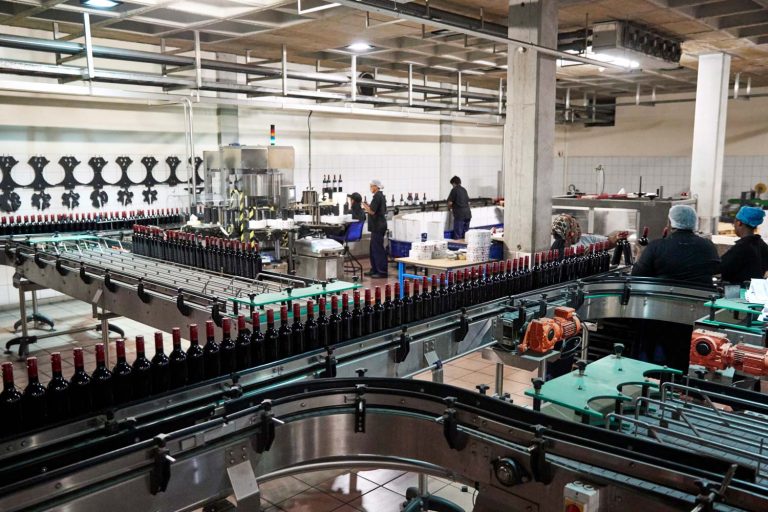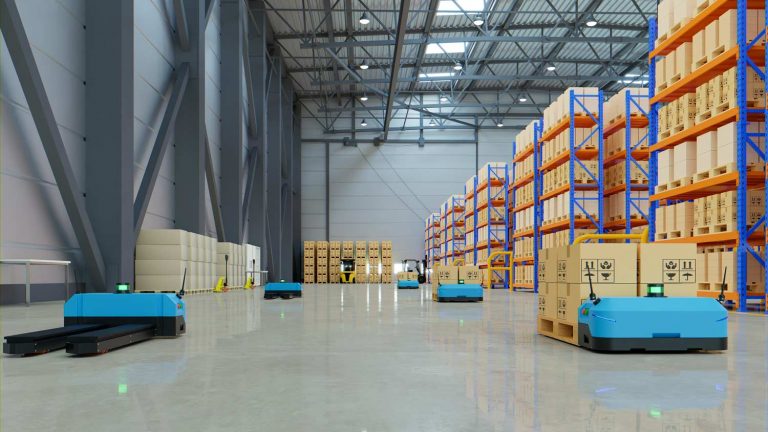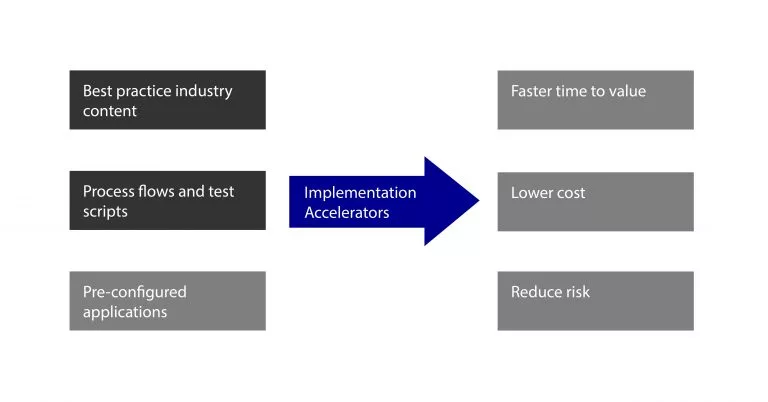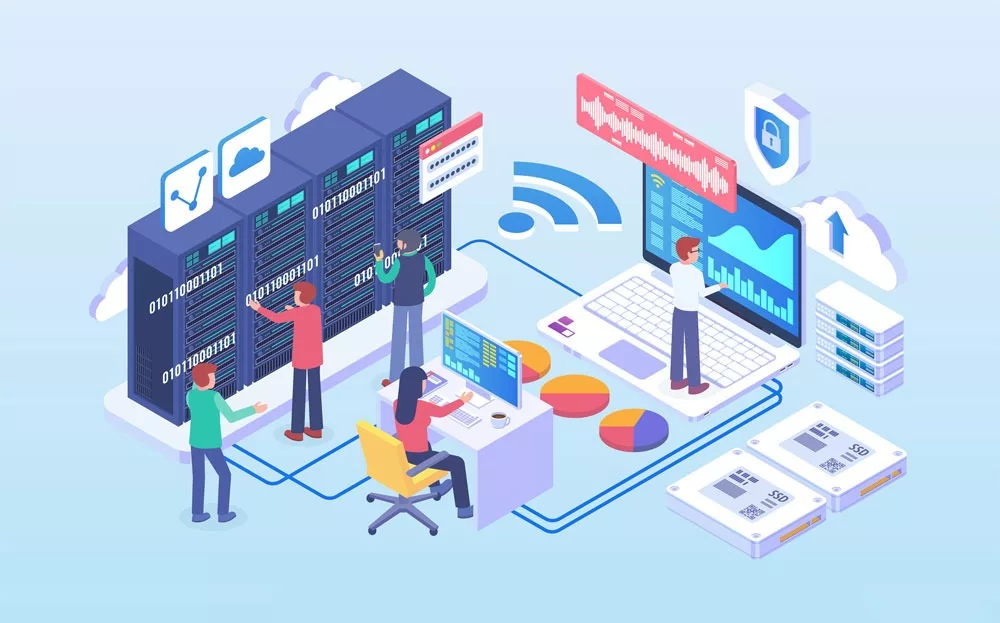Archives: Blog Articles
Description.
Demand for supply chain traceability and transparency in the Food and Beverage industry
Companies are under pressure to gain visibility into their multi-tier supply chains and share more information with their customers, partners, and other stakeholders. Requirement for traceability & transparency is increasing every day due to regulatory due diligence requirements, increased investor and consumer expectations, and technological advances which have raised the bar etc.
Transparency extends to what data you will be transparent about, whom, and how often or when. Increasing transparency is an effective way of demonstrating sustainability efforts and openness to stakeholders. Traceability provides means for companies to become transparent to their different stakeholders. Traceability and transparency can be considered as business strategies to help companies to understand better and thus respond to the most critical risks and opportunities in their multi-tier supply chains while creating confidence in multiple external stakeholders.
Living in a new digital era, companies nowadays identify the importance of greater traceability and transparency while understanding their availability on-demand with accuracy. However, many companies still rely on pen and paper to record track and trace (T&T) data in physical files or spreadsheets. During the early days of the COVID-19 global pandemic, we have noticed several companies failed to meet market demand due to a lack of control within the supply chain. This was revealed by delays in shipments (inward & outward). Also, they were unable to quickly adapt to new working methods and work shifts to continue operations with minimizing the infection rate within premises. Companies who were already digitalised or able to adopt at a faster phase were able to overcome challenges faster than those who hadn’t. Accordingly, having connected supply chains gave a distinctive competitive edge for those companies with increased traceability & transparency.
On the other hand, today’s customers are well-informed and want to know more and more information about the products they buy, especially food and beverage items. Also, consumers are aware of their rights to know what they consume. In the recent past, the authorities were keener on safeguarding consumers’ food safety & enhancing trust due to increasing food-related non-communicable diseases such as diabetes, cholesterol and illnesses due to food patterns themselves such as cancer, obesity etc. Also, many food scandals in the recent past made people feel fear for the food they consume. Eg: Fake food (Refer: Plastic rice food scandal- https://www.bbc.com/news/blogs-trending-40484135 ).
Moreover, legislations themselves resulted in food and beverage companies being more transparent regarding their origin, quality, certifications, safety cautions and many more. Similar to the safety issues, business stakeholders are now keen on sustainable initiatives and cruelty-free movements. Today’s customers tend to associate products that match their values beyond the financial and functional benefits of products. They want the businesses to be transparent about their values and already have started considering what products to buy.

It’s important to understand sequential problems associated with lack of traceability & transparency in businesses. Most of the companies aren’t fully digitalized and the processes that need end to end trace therefore doesn’t provide the correct picture. In such businesses, some of the traceability data is still in physical files/folders or spreadsheets. The real problem arises when there is a requirement to backtrack such data for recalls management, compliance and quality management issues because identifying root causes for problems and correcting them fast is very difficult. Accordingly, T&T in the modern food and beverage industry supply chain cannot opt-out which emphasises the importance of digitalizing the supply chain for T&T.
The ideal digital system for F&B companies needs to capture all goods transactions on various levels and then connect other details such as goods origin, certificates, and quality test results within the connected system. Such systems’ traceability and transparency should be extended upstream towards the suppliers and downstream towards the customers. Selecting an industry-specific ERP solution will give you the best value proposition over generic systems in receiving a traceable and transparent supply chain.
Why do you need supply chain transparency in the food and beverage industry?
Food supply chains are increasingly becoming complex and dynamic to serve ever-evolving consumer needs. On the other hand, F&B manufacturers are heavily dependent on their supply chain whereas one supplier may source from one or few other suppliers in the local or global market and at the end of the day you are not having only that supplier. This complexity in the supply chain itself demands focusing on food transparency more than ever before. And some other reasons why it urges for supply chain transparency are; to adhere to government regulations, to ensure they participate in animal welfare and environment, meeting quality standards and to provide the customer with product information; making them feel safe.
Importantly, it is required for F&B manufacturers to be transparent about their initiative as today’s consumer needs to feel safe, feel not trapped and receive more value for the price they pay. It has come to light that more consumers are increasingly interested and demanding transparency now! For instance, researchers at the MIT Sloan School of Management have found that consumers may be willing to pay 2% to 10% more for products from companies that provide greater supply chain transparency.
Here are a few main benefits of gaining full supply chain transparency.
1. Meeting customer requirements for transparency

In today’s world, rational & conscious customers research many times before they buy a certain product. Especially when it comes to food items that have a direct impact on their health, customers tend to avoid impulse purchasing and go with trustworthy products. So, F&B manufacturers need to earn the trust of the customer by nailing what they can do to register as a trustworthy brand in the customers’ minds. The simplest and the ultimate way of building trust for a brand is by becoming transparent to their customers.
Today’s customers are aware of their right to know and therefore expect brands to be transparent about quality, ingredients, nutritional facts, benefits, side effects, warnings and so on. Not only that but also the customers are now concerned about social welfare, animal welfare, environmental sustainability and they appreciate ethical brands. Also, organic products, locally grown products are some of the wide spreading purchasing trends and today’s customers want to know about the origin of the products and their journey from farm to table.
Accordingly, this shows how important it is to become transparent to attract a loyal customer base.
2. Identifying and responding to food safety issues

Foodborne illnesses are a major concern to many F&B companies due to the serious financial risks involved in handling such situations as well as their impact on public health. Food standards compliances are increasing and becoming more stringent day by day expecting companies to be more proactive in their food safety measures. Therefore, manufacturers need to take all measures to put in place a proper track & tracing of all products that they release to the market as well as items in the factory in the form of raw materials, work in progress, finished goods as well as goods in transit. Also, when a food safety issue arises manufacturers should be able to trace batches, shipments and identify them correctly in minutes to take corrective measures fast. This is a very challenging process especially due to the multi-level complexity of the supply chain as a result of material sourcing from multiple vendors, locations and suppliers in other countries etc.
Accordingly, food manufacturers should be able to trace down all tiny details of a product to ingredients, suppliers and so on to understand what has gone wrong and take corrective actions to avoid it in future as well as product information in front of the court of law and customer negative word of mouth (WOM) and complaints. This reflects why the food supply chain should be transparent to identify and take corrective measures for safety issues.
However, today, technology has paved its way to provide the tools to recognize origins of ingredients quickly and accurately, so containment of adverse quality events can be coordinated and executed quickly across the supply chain.
3. Reducing food loss and waste

It has been identified that one third of the food produced for human consumption is never consumed and they are lost/wasted during the supply chain. One of the main reasons for food waste is due to food safety, fit for consumption and not receiving market for it. Also, food items’ appearance, dropped quality, excess supply compared to demand, and poor management of seasonal production fluctuation are some of the reasons why food and beverage do not get purchased or drop off from the supply chain itself. Also, food wastage can occur across the supply chain during different stages such as; in the farm, factory, transportation, warehouse, retail store or at the end-consumer kitchen during meal preparation or at the table!
So, it is important for F&B manufacturers to identify why, when and where foods waste within the supply chain and take corrective measures. For that it demands for a greater level of food supply chain transparency in order to reduce wastage and increase efficiency.
Accordingly, it’s important to have transparency in the food and beverage supply chain and it ultimately helps in satisfying customer, company, societal needs for sustainability, social & animal welfare and environmental protection while maximizing company profits through efficiency.
Setting up processes and workflows with the aim of achieving full transparency, understanding F&B businesses critical requirements to meet customer demand for information transparency, identifying & responding to food safety issues and reducing food wastage is important. This demands for an ERP solution that enables you to achieve your transparency goals according to your exact industry requirements.
Why and when do you have to upgrade your IFS application?
IFS is a leading software solution provider that develops and delivers best in class Enterprise resource planning software (ERP) solutions to businesses worldwide with thousands of delighted customers. IFS ERP systems provide advanced and detailed functionalities across various industries along with other solutions such as Enterprise Asset Management (EAM) and Field Service Management (FSM) software solutions.
Often you see messages that pop up saying “A software update is available” which you easily click on “cancel” instead of “install” thinking you will get to it later. Do you?
Do you know what comes with these update options? Usually, the IFS vendor provides periodical updates and patches which contain new or enhanced features, functionalities, security and better User Interface (UI) to make your IFS application best service you.
There can be multiple reasons why you may have second thoughts when clicking on “Update”. One reason is that they genuinely postpone it to undertake later which may end up carrying on with the older version of the application which is with limited functionalities. Another reason is, it might be that sometimes people take their own time to realize that they need updates which might be reasoned out from the actual functionality gap they find while they are daily using it. Or else they skip it as they might not know if they want it or not. Also, it could be because they might think it will complicate their current workflow or have an impact on daily operations or be reluctant to pay the cost of the upgrade.
Due to numerous reasons, the software must be updated, and IFS has taken this into account by time to time upgrades it releases that are figured out through continuous R&D and customer feedback appraisals.
Why do you have to upgrade your IFS application?
- To include patches remedying security holes and bug fixing- To avoid information being lost, stolen or even damaged.
- Benefit from new or enhanced features, better compatibility with different devices or applications while removing outdated/ irrelevant features to improve user experience.
- To have the latest versions that can give the best ROI on your software investment without becoming obsolete.
- Access to the latest technologies to boost the company’s performance.
- To increase the productivity and efficiency of your hardworking staff & the software itself with advanced features that make employees lives easier.
- To stay compliant with the latest regulations and be risk-free of huge fines and lawsuits and be ethical in handling information of customers. For instance, Acts like GDPR mainly safeguards the interest of data protection of client information which keeps evolving to help secure them better.
- To reap out better integration capabilities.
When do you need an upgrade of your IFS?
Here are some instances that you should actively consider upgrading your IFS application.
- Compliance with regional, national and international laws and regulations.
- Missing standard features.
- Moving away from support for the older versions by the vendor.
On top of the above, several things should be evaluated before upgrading your IFS application to the new version, along with an extensive cost-benefit analysis. And it is critical to understand the ideal timing to go for an upgrade that gives the best value for IFS customers. It may be tomorrow or in another years’ time.
Therefore, you should leave it to the experts who can provide you with such in-depth analysis.
Platned for your IFS upgrades
Contact Platned if you are looking for.
- Upgrade to the latest IFS Cloud from the previous IFS version.
- Adding new modules to existing IFS environments.
- Migration from on-premises to cloud.
Also, we provide below IFS Services.
- Functional & Technical services.
- Managed Services.
- IFS Business-System health Check.
- Automated System Monitoring.
- Oracle Database Support.
With extensive experience in multiple industries and the capability to handle complex implementations, we provide complete peace of mind by looking after your IFS applications and databases, with our expert services, which can be tailored to meet your specific challenges.
Why do you need a well-defined item management capabilities incorporated into your distribution/ logistics company?
Inventory is often the largest asset most of the distribution companies have. It is also expensive to purchase. Therefore, having poor inventory control may result in working capital crisis, damage, expire/ perish of inventory which will have a ripple effect on profits. On the other hand, if a company doesn’t manage to sell its inventory at the right time, it “eats” the profits by increasing the cost of inventory handling that can be one of the main bottlenecks for the growth of wholesale distributors, warehousing and logistics companies.
Wholesale distributor often stocks and sells thousands of inventory items; and some may contain slight variations in size, style, or other attributes. So, it’s important to pick the right items for production/processing to align with the customer/ production specifications. On the other hand, when it comes to handling customer orders, proper management of SKUs with similarities need careful mapping to avoid wrong items being sold. Also, it promotes fewer returns and scraps while ensuring efficient sourcing of materials from suppliers.
Accordingly, poor item management strategy can lead to harmful miscommunications and loss of productivity, ultimately hurting your business, while proper item management supports an organized warehouse, with carefully tracked inventory and supply chain movement.

Here’s are 5 reasons why well-defined item management should be in place;
1. To manage alike items
These are usually called matrix items. These items may contain slight differences in type, size and colour etc. that could be a hassle, creating various combinations ultimately resulting in confusion, time-consumption, wrong items being sold or purchased, overstock or stockout and many other things that can limit growth.
Hence, fully-fledged item management automates and streamlines item creation, sales, and purchasing processes for product families that use item attributes and values. These functionalities need to be simple to perform and should be constructed well for flawless operations.
2. To streamline kitting process
Kitting is common in durable goods such as automotive, electronics, machinery and some of the goods such as; food & chemicals. It can be either disassemble of items into stock to resell as separate components or to pick as components to use in assembling or bundle with the products as kits in the form of instructions, user manuals, etc. which are call non-stock items. Especially, when the items are disassembling to use in other orders there is a high chance of components getting lost or damaged.
Therefore, the ideal ERP for distribution should consist of flexible item management options that provide flexible kitting options for both stock and non-stock kits which also enable accurate costing associated with scrap accounting.
3. Manage compliances, recalls and quality control (QC)
Distributors require serial tracking to seamlessly monitor and manage inventory movements. Serial numbers provide full visibility with tracing down stocks at the receipt of them from suppliers to sales orders to identify which items to include in the customer orders. It helps understand what’s gone wrong and where the exact problem is in the value chain and assist in taking the corrective measures fast.
On the other hand, when it comes to handling product replacements and recalls for warranties, lot tracking capabilities are crucial. Lot tracking improves compliance with industry and customer quality requirements and is used in combination with expiration dates to manage stock rotation for perishable inventory, to manage recalls and to track items and inventory attributes.
Serial and lot tracking provides the ability to backtrack the material throughout the production/ value-adding process where it supports quality control by identifying and avoiding using expired/perished/ damaged items in the production/assembly process before the final product goes out to the market.
An ERP solution that provides complete item management functionalities with serial and lot tracking will enhance customer experience, quality of work while enabling you to confidently face regulatory or customer compliance.
4. To overcome problems related to the unit of measure
Warehouse distributors will face over-complication of their processes when it comes to the unit of measure conversion, where they may purchase in one unit of measure, stock in another unit of measure, and sells in yet another unit of measure. It will be an even more struggle to deal with bulk quantities and when larger quantities should be broken into smaller quantities.
ERP users also should be able to define units of measure and how each unit of measure is related or converted to other units of measure while providing user-defined UOM conversions and variable UOM for purchasing, inventory, and sales avoiding manual calculations. This is why you should research item management capabilities when you are selecting an ERP solution that is a long-term investment for your company.
5. Manage expiration dates
Expiry dates play a vital role when it comes to the storage of perishable goods. Some of the non-perishable’s such as rubber, plastic etc also can have expiry dates even they do not seem to have where their expiry may be due to outdated technology, depreciation or degrading etc. Therefore, it is important to associate your inventory with lots and serial numbers for Quality Assurance (QA) and Quality Control (QC) processes. Managing expiry dates efficiently also enables efficient stock rotation for maximization of your inventory profitability. On the other hand, it helps manage customer satisfaction by assuring the quality of the products by removing expensive after-sales rectifications/ replacements.
Thus, lot expiration dates in item management help improve stock rotation, quality control while amplifying customer service visibility.
Accordingly, it is very important for you to carefully select your ERP solution for your distribution/ logistic company as you will need extensive capabilities in item management with having understood the importance of inventory management for businesses of this nature.
Why do you need to upgrade to IFS Cloud?
You must be wondering if your current ERP software version is “doing the job” and if there is a reason to upgrade to a new version when the vendor releases a new version claiming advanced functionalities, efficiency improvements, technological advances, etc. Why do software vendors release updates and new versions, anyway?
When it comes to most new software releases, developers continue with research and development on the product to add new capabilities such as configurability to reduce modification requirements; improving functionalities to support better processes; fixing bugs; and security issues that are discovered; thus reducing vulnerabilities and cybersecurity threats your company may face. On the other hand, such releases could entail major changes to underlying architecture such as moving to the cloud, making software platforms independent adding intelligence and autonomous capabilities etc.
Furthermore, it could involve; lack of mobility, missing features/functionalities, compliance with the changes to laws and regulations, increased cost of maintenance and most importantly improve user experience.
IFS, being a class-leading solution provider, has released a fully cloud-based version of its software which empowers you to choose how you wish to host your solution. You can select IFS fully managed cloud, on-premises or self-managed cloud infrastructure. This latest version comes with 100% open APIs which allows seamless integration with any other systems, using capabilities such as Artificial Intelligence(AI), Machine Learning(ML), Internet of Things (IoT) or Robotic Process Automation(RPA).
Bi-annual optional releases with IFS cloud means that the solution is always up to date with new capabilities whilst keeping the impact on business to a minimum level.

New IFS Cloud brings to you.
● A sophisticated user interface to drive employee engagement & satisfaction while improving the speed and efficiency of decision making.
● A cloud platform that is responsive to screens of different devices for a greater user experience, AI, IoT, and a host of other application services to facilitate remote assistance in services or predictive maintenance.
● A Single Platform that includes all IFS products
● Rapid Evolution for FSM -New service innovation to support Field Service Management like Remote Assistance functionality, keeping the phase as the industry-leading solution.
● Maintenix components for Aircraft Maintenance
● Enhancements – some of the key enhancements are listed below.
● Service Management – Embedded Remote Support for Service & Maintenance.
● Asset Management – Improved EAM Technician Portal.
● Projects – Improvements to Contract Management.
● Manufacturing – Supplier classification tracking & improved quality management.
● MRO – Improved Heavy Maintenance Engineer Portal and Aircraft maintenance visit material and part sourcing.
● HCM – New Browser-Based Time Clock, APIs for integration with third-party payroll systems.
● Supply Chain – Warehouse Data Collection (WADACO) enhancements.
● Platform – New Machine Learning application service new capabilities for process automation, OData-based RESTful APIs to replace BizAPIs for system-to-system integration.
● New Release Cadence
– Releases new functionalities every six months along with monthly service updates.
● Evergreen Support
IFS Application 8 or below – This is already in the restricted support phase.
IFS Application 9- Standard support is not available and extended support is only available until mid-2023 and will move to restricted support thereafter.
IFS Application 10- Standard support expires in 2025 and extended support will be available until mid-2028.
IFS Cloud-Evergreen Support- Standard support is available with monthly service updates.
Accordingly, Upgrades brings you more capabilities and helps you remove obstacles that you are facing as every upgrade comes with advanced technologies and capabilities for your company to stay agile. IFS cloud is something that you should consider if you are looking to make your business evergreen and help you to stay ahead of the competition.
Industry best practice on your ERP implementation
“Industry best practices” is a common term in the ERP world, where most of the ERPs utilize standard methods in the sector to build their Enterprise Resource Planning solutions. These methods are a collection of norms & methods which are commonly accepted as successful by industry professional and successful entities. In the context of ERP implementations , integrating proven methods are important to fasten the ERP implementation process and benefit from standard approaches that are tested and proven to be effective.
Industry-specific ERP solutions with these best practices would provide a greater level of adaptability within the particular sector and its micro-verticals with minimum configurations and customizations. The below illustration explains the exact benefits of using specialized Enterprise Resource Planning solutions compared to the traditional ERP implementation approach.

Every company has their way of doing things and completely replacing those workflows would alienate employees resulting lack of support for the new ERP implementation initiatives. On the other hand, our years of experience in implementing ERP is that no company is going to adopt an Enterprise Resource Planning as it is without personalizing it to the company. The interfaces, documents etc. are some frequently configured items that become different from one to another. Also, in many companies, there are unique configurations that might associate with their differential factors from others. An sector-specific Enterprise Resource Planning solution comes with a greater percentage of industry-standards built-in within the system.
Benefits of having the best practices on your ERP implementation.
- Quick delivery with a predictable outcome.
- Incorporation of industry practices to align workflows according to successful similar companies.
- Professionally produced technical solutions.
- Broadly tested and verified with fewer possible errors and risks.
- Reduce the total cost of ownership.
Selecting a correct Enterprise Resource Planning and a solution provider is the greatest challenge you have where selecting a wrong Enterprise Resource Planning can lead you to bear an unnecessary amount of money for expensive additional configuration along with your time value out of lengthy ERP implementation process.
Platned as an expert in providing solutions helps you to select the right Enterprise Resource Planning system to deliver the best value for your company while taking you through a reliable journey towards your digital transformation. We specially focus on providing industry-specific ERP solutions where close to 60% of the system comes in the core product and only the balance you will have to customize with simple deployment configurations and unique implementation configurations.
5 Main aspects to evaluate before implementing an ERP system for your Distribution company!
To begin, it’s important to remember that most distribution ERP software systems are designed and developed using industry standard practices in order to implement them faster with less customizations. Obviously, implementing a proper Enterprise Resource Planning system will bring in disciplined procedures to the company, but sometimes the standards are difficult to adopt across different industries.
However, selecting the best distribution ERP system should be done carefully with properly evaluating many factors while considering current business processes, workflows, employee work structure and so on. Lack of due diligence during the evaluation stage may lead to an inadequate Enterprise Resource Planning solution. This won’t just translate into a loss of precious resources, time, and costs, but also cause frustrations, restrictions in the business’s growth and operational capabilities for years to come.
Simply, you need to make sure that your long term investment on a distribution ERP system pays off your investment and enable you to reach out to your long term and short term goals.

Here are 5 main areas that you need to evaluate before implementing an ERP system for your distribution company;
1.Productivity: You need to evaluate how far your chosen Enterprise Resource Planning system increase your overall productivity. Here are some evaluation criteria that you have to consider to identify if a particular system will contribute to increase productivity of your company.
- Accessible anytime, anywhere and from any device.
- Ability to work in any language or currency.
- Easy to learn and adopt with less complex interface.
- Automation of business processes with simplifying approval process and notifications.
- Single database to store documents that is accessible by any key personnel.
- Comprehensive reports.
2.Functionality: Another aspect that you need to evaluate in your Enterprise Resource Planning selection decision is functionality that it delivers. You can evaluate functionality with below criteria in a broad perspective.
- Capability in handling multi-company, international companies, multi-site, multi-warehouse including consolidation, reconciliations etc.
- Financial management capabilities.
- Quote-to-cash capability.
- Sales order and PO management Cost accounting capabilities functionalities.
- Warehouse and inventory management related functionalities
- Integrated BI with industry-specific analytics.
- CRM.
3.Technology: from the technological capabilities aspect, it is vital to evaluate your distribution ERP in terms of;
- Availability of all functionalities on cloud platform.
- Responsiveness across different devices and screens.
- Ability to export data for reporting, transfers and backups.
- Switch data hosting method.
- Flexible and customizable.
4.Value: an ERP should add value to your business with;
- Multiple deployment options.
- Flexible licensing options.
- Reduced cost of ownership.
- Scalability.
- Vendor charges.
5.Risk: a fully-fledged ERP need to have the capacity to minimize risks faced by your company.
- Predicting monthly cost.
- Quick deployment.
- Utilizing resources of cloud hosting leaders.
- Vendor’s industry knowledge and customer reference on previous projects on same or similar industry verticals.
- backup & disaster recovery.
- Security.
- Simpler integration.
These evaluation criteria will guide you to choose the best ERP that well suits your distribution industry-specific requirements. So, do not hurry to conclude your decision in selecting the best distribution ERP system since it’s a long term investment which will directly impact your company performance.
How the nature of manufacturing and flexibility of ERPs affect your ERP selection decision
Most of the manufacturing companies today take mixed challenges such as compliance management, adhering with regulations, traceability requirements, managing inventory and supply chain, staying up to date with the rate of innovation within the industry and skill gaps. Therefore, manufacturers require a breadth of integrated functionalities that fits your specific business requirements. Also, when you are selecting an ERP solution for your manufacturing company, it should adopt/align with your short- and long-term business goals.
And, some companies expand vertically as they grow which demands an ERP system that is flexible in adapting to broad-ranged manufacturing situations at the first go when they are selecting an ERP as it will help them to continue one ERP system without moving to another or multiple systems for different businesses as they grow. This will also help to have streamlined intercompany transactions as well as to have a full view of entire business for efficient decision making at all levels. On the other hand, discrete manufacturing and process manufacturing require different functionalities in the software based on the differences in the processes involve. Process manufacturing will require different and complex functionalities than discrete manufacturing as the production process is more detailed. Therefore, you should consider what ERP fits best for your manufacturing nature when selecting your ERP system. ERP vendor sustainability in the market for the long run, industry focus ERP, functionalities that provide a close match to their existing requirements are some of the other main things to look into when selecting the right ERP solution for your industry.
Read more: ERP Solution For Manufacturing
Small & medium-sized businesses (SMB) manufacturers are usually flexible for changes and adapting to new solutions but sometimes constrained by the limited resources. In the case of financial limitations, they can go for mid-market ERP solutions that provide limited scope than top market-focused ones where they still serve the purpose by delivering specific functionality for an affordable cost. In contrast, based on your process requirement and fund availability to you, you may go to a top market solution that might provide you facilities that may allow you to have deep downed functionalities. Especially, medium to large scale manufacturers will benefit out from these sorts of solutions and of course, it depends on the manufacturing nature and complexity involved. These solutions will require minimum configuration because if you take most of reputed ERP solutions for top market provide industry specific ERP solution where they continuously invest on going into details and being relevant to specific industries and verticals. On the other hand, small to medium companies can benefit from mid-market solutions and follow the best industry practice to minimize any customization costs.

1. Helps adapt to change – Market conditions and regulatory environments can change swiftly, and a business should be able to effectively respond to these changes. A flexible ERP, on the other hand, should easily respond to this change. Releasing new versions of software(s) with new functionalities by your selected ERP vendor is a good sign of that you receive a solution which helps to be up-to-date with latest technological advancements in the market to increase overall efficiency. Moreover, it enables the company to transform and extend business processes complying the new changes that may demand by the internal or external environment. Like the flexibility of the ERP platform the availability of the extended after sales team and their flexibility is important.
2. Cost-effective – ERP should save long term cost of the customer specially in adding horizontal and vertical modules and in terms of annual cost increments. Sometimes, even if you feel the particular investment is costly at a given time you should always evaluate the future costs involve in expansion plans, compatibility with other business areas of the company etc.
3. Excellent functionality– ERP systems must be flexible to integrate/ associate with other software and platforms to achieve more functionalities. Business Intelligence (BI), AI (Artificial Intelligence) and ML (Machine Learning) capabilities have already taken over many areas of businesses. Having such futuristic technologies combined into your ERP functionalities will help you become agile and capable of keeping up with new business world challenges with confidence.
4. Quick upgrades – Upgrading process should be easy and flexible for you to undertake at your convenience at any time you prefer.
5. Easily accessible data – Your ERP solution provider & vendor should provide flexible data hosting options; cloud or on premise based on your own preference. On the other hand, you should be able to swift your hosting method at no or less hassle. Cloud-based ERP systems has become the new normal where it provides a safe data hosting. Also, it reinforces real time data processing and fast access to information with fastening the decision-making process. On the other hand, cloud ERP facilitates field services, remote document management and other new business models such as virtual businesses.
Thus, great functionality and flexibility are required for a fully-fledged ERP to drive business excellence in the manufacturing industry.
Be long-sighted and invest in the right ERP with the right solutions provider with a proven track record, who can provide long-term support & services with constant updates and enhancements aligned with the latest technology!
AI and DATA Protection
AI and DATA Protection Artificial Intelligence is taking over many industries by facilitating personalized experience and managing & providing information. One of the main fear factors among the public against the adaptation of AI is the privacy concern related to data usage of individuals without their consent for various purposes.
It’s being only one side of the coin, there are many advantages that businesses can be benefitted from integrating AI. One such area of benefit is the automation of user support and the level of automation of user support can be varied from zero to full based on the organization’s requirement. Accordingly, based on the level of usage of AI in user support for automation, it can be either reactive support or proactive support and Autonomous support.
1. Reactive Support – Artificial Intelligence will only react to commands from users to support them, this can be through various input activities.
2. Proactive Support – Artificial Intelligence proactively take actions without explicit user request. This can be either.
- AI services notify users what to pay attention on via notifications or alerts.
- AI services make personalized recommendations such as fitness and health applications.
3. Autonomous Support – Artificial Intelligence will make decisions and take actions on behalf of users without confirmation.

However, we can protect our data ourselves.There are few levels that you can take your data protection initiative. At Management Level, System Level and AI Level. While management level and system level assist to protect data from unauthorized entities, AI can provide different DATA protection approaches where the AI itself will protect your data. Depend on the level of protection provides, there are 4 approaches for data protection.
- Data-modifying Approaches – Modify or sanitize user data so that it cannot be linked to specific individuals which leads to an inherent conflict between both privacy and effectiveness goals.
- Data-encrypting Approaches – This comprises protection approaches that work with encrypted user data, ensuring integrity and confidentiality when sharing data.
- Data-minimizing Approaches – Aim to increase efficiency by minimizing the amount of personal data required.
- Data-confining Approaches – An approach that does not require sharing personal data outside the user’s territory.
These 4 approaches ensure data integrity and confidentiality related to AI. The personalization of AI is one such way that protects your data handled by AI.
Accordingly, it identifies the advantage of using AI over the general fear of data security. However, due to the broad nature of AI, it cannot be concluded that it is fully secured and there are still some arguments that are to be further researched and addressed.
How to select the right ERP solution for your manufacturing enterprise!
A business is made from numerous building blocks; from Finance to Manufacturing, Purchasing, Marketing and they must meet their individual and collective goals to meet company overall goals where the ultimate success is how well they synchronize within and beyond!
How to select the right ERP solution for your manufacturing enterprise! A business is made from numerous building blocks; from Finance to Manufacturing, Purchasing, Marketing and they must meet their individual and collective goals to meet company overall goals where the ultimate success is how well they synchronize within and beyond! As any business grows, data that is to be processed and mange increases grow. On the other hand, complexities of workflow rise and becomes difficult to manage with pen and paper. Many companies who have initially functioned with spreadsheets and email already found out the difficulty to manage data/information with the existing outdated technologies and time-consuming processes in place. Moreover, the inability to keep up with the booming customer demand could derail any business sooner or later. Information being the most valuable resource of any organization, data processing and timely disseminating accurate information to relevant parties across individuals in a particular unit, between different units, departments, plant or even outside the organization has been identified as the key for the success of any business.
This is where ERP (Enterprise Resource Planning) software comes into play! Investing in an ERP is a vital decision to any organization, and it is often regarded as the DNA of a business! However, once you get to know the pros, letting an ERP manage your business resources would be an easy decision for you to make.
Apart from the main use of an ERP which is, bringing together disparate activities under a single integrated application, increasing operational efficiency which ultimately ensures customer success, there are ample benefits you get on your way to becoming #1 such as, increased measurable value for investment, data security, streamlined processes, superior scalability, enhanced employee efficiency and of course high customer satisfaction!

As many ERP solutions claim different benefits, it is important that you smartly choose the perfect ERP solution to suit your business. So, here’s a few factors that you need to take into account;
- Type of manufacturing (high volume/low volume or discrete/process).
- Level of training.
- Operational simplicity.
- Coverage of core functionalities.
- Financial availability.
- Flexibility in adapting to different manufacturing situations (project, job shop, batch, mass).
- Future vertical and horizontal expansion strategies.
- Ability to adapt to short- and long-term goals of the company.
- Ability to upgrade with new technologies for improved functionalities, increased effectiveness, and efficiency.
- Security and privacy.
- The number of users allowed.
- Personalized dashboards for a greater experience.
- Additional functionalities it provides.
- Ability to integrate with other software and platforms.
- Proven track record in the industry as well as other industries.
- The flexibility of hosting methods available.
Again, considering these elements only will not be effective if your service provider cannot fulfil and cater to the needs of your company effectively. Thus, we need to review and appraise their knowledge and comparison knowledge in multiple industry-leading ERP vendors. Another important thing to consider is the stability and experience they have catering to your industry, related industry and beyond the industry. A good ERP partner would be transparent and provide accurate as well as independent opinions about their ERP products which help you to take correct decision concerning the benefit of both parties.
Most importantly the ability to provide long term commitment which extends from implementation of a system to aftersales will help your company to operate without any bottlenecks.

